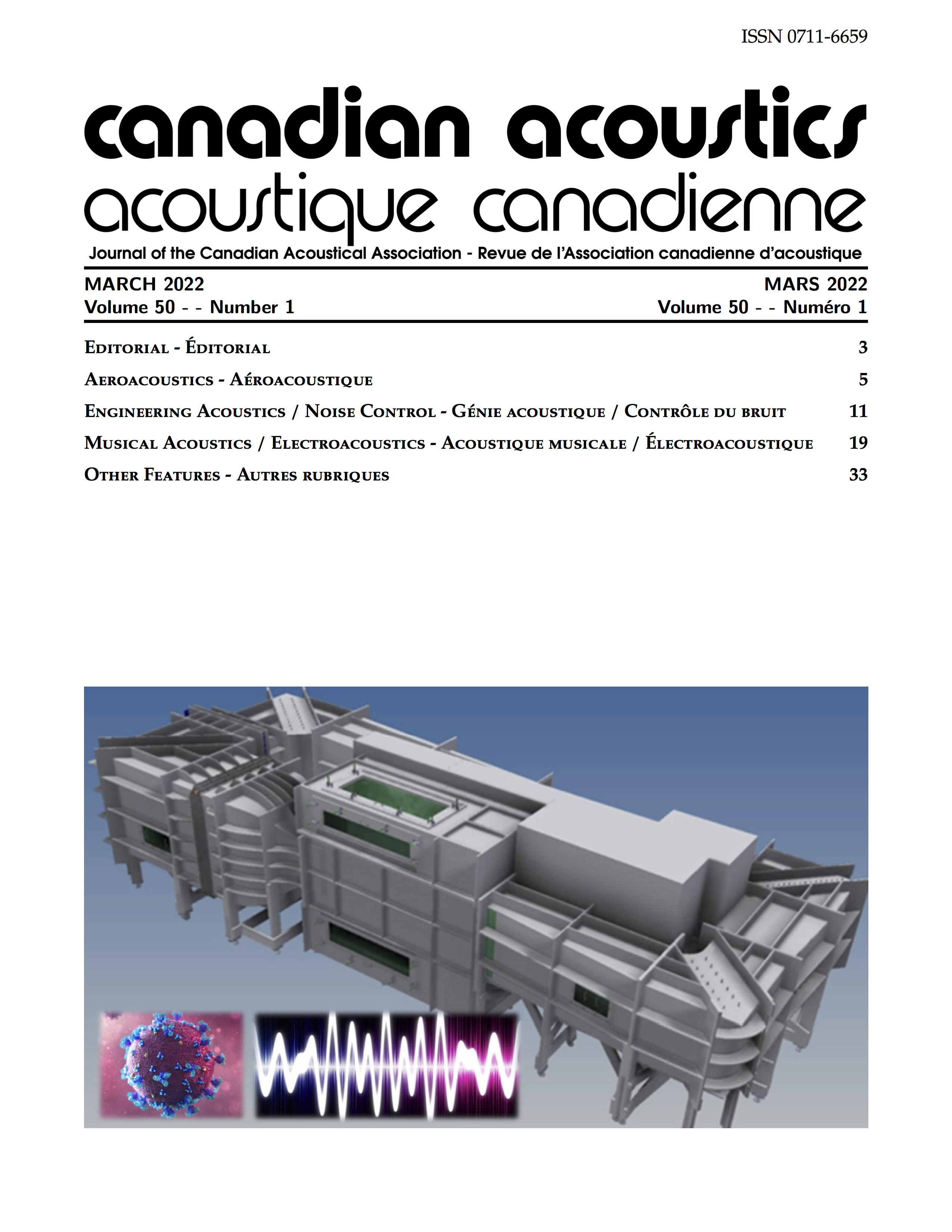On the Effect of Trailing-Edge Bluntness on Airfoil Noise
Keywords:
airfoil noise, trailing edge bluntness.Abstract
The purpose of this study is to experimentally investigate the effect of trailing edge bluntness on the generation of airfoil tonal noise at different angles of attack and low to moderate Reynolds numbers. Detailed aeroacoustic measurements are made for an airfoil at three angles of attack: 00, 50, and 100. Airfoil chord-based Reynolds numbers analyzed are 2.8 ×105, 3.7 ×105 and 5 ×105, corresponding to free stream velocities of 14, 18 and 24 m/s, respectively. The airfoil noise with a straight trailing edge is seen to change from a broadband hump to intensive tonal noise with increasing angle of attack, while it changes from tonal noise to a broadband hump with increasing Reynolds number. Moreover, results show that for higher values of Reynolds numbers the dominant tonal peak decreases in amplitude and shifts to higher frequencies. In general, it is observed that as the trailing edge bluntness increases, the dominant tonal peaks have larger overall amplitudes.
Additional Files
Published
How to Cite
Issue
Section
License
Author Licensing Addendum
This Licensing Addendum ("Addendum") is entered into between the undersigned Author(s) and Canadian Acoustics journal published by the Canadian Acoustical Association (hereinafter referred to as the "Publisher"). The Author(s) and the Publisher agree as follows:
-
Retained Rights: The Author(s) retain(s) the following rights:
- The right to reproduce, distribute, and publicly display the Work on the Author's personal website or the website of the Author's institution.
- The right to use the Work in the Author's teaching activities and presentations.
- The right to include the Work in a compilation for the Author's personal use, not for sale.
-
Grant of License: The Author(s) grant(s) to the Publisher a worldwide exclusive license to publish, reproduce, distribute, and display the Work in Canadian Acoustics and any other formats and media deemed appropriate by the Publisher.
-
Attribution: The Publisher agrees to include proper attribution to the Author(s) in all publications and reproductions of the Work.
-
No Conflict: This Addendum is intended to be in harmony with, and not in conflict with, the terms and conditions of the original agreement entered into between the Author(s) and the Publisher.
-
Copyright Clause: Copyright on articles is held by the Author(s). The corresponding Author has the right to grant on behalf of all Authors and does grant on behalf of all Authors, a worldwide exclusive license to the Publisher and its licensees in perpetuity, in all forms, formats, and media (whether known now or created in the future), including but not limited to the rights to publish, reproduce, distribute, display, store, translate, create adaptations, reprints, include within collections, and create summaries, extracts, and/or abstracts of the Contribution.


